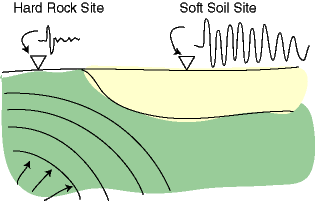While on Zephyr tour recently, en route to a new pocket listing in the Arterra, (which a building guy proudly told us was the first LEED certified building in the city) the question of whether we were in the liquefaction zone came up. I looked around and guessed that yes, it was likely, and it got me to wondering how on earth we keep building buildings in the liquefaction zone.
 |
| USGS |
As discussed here, liquefaction refers to areas of young geologic deposits, and/or fill, in low lying areas, where "soft muds are subject to the phenomenon of saturated soils losing their stiffness and strength during shaking. Young deposits will liquefy, or turn into a sandy liquid due to the strong shaking a big earthquake will produce."
Alex Clark wrote a pretty great post with maps for the Front Steps while back that gives a good sense of liquefaction locations.
The Real Dirt on Liquefaction, has a table: Techniques for Liquefaction Hazard Mitigation on page 20, if you are curious, and of course, the guide below. My curiosity about modern earthquake engineering is not fully slaked, so there will be more on this subject...


